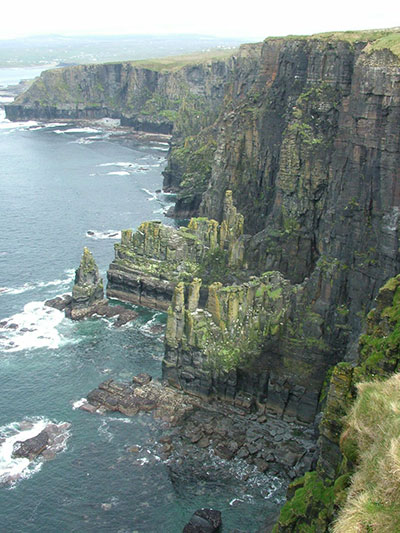The Landscape of Ireland
Geology

Ireland has a very complex geological history; from oceans closing and re-opening, to massive mountain building events (called orogenies), to creation of coral reefs in shallow warm seas, and glacial ice sheets covering almost the whole country.Each area has it’s own unique geological history. The south of the country is dominated by the devonian Old Red Sandstone that has been moved and folded into roughly West East trending ridges of hills and mountains. Carboniferous limestones and shales are the main rock type in the midlands and parts of the west with the Burren being one of the finest examples of a karstified limestone landscape in Europe. Large granite intrusions can be seen in Galway, Wicklow, Down and Donegal associated with the closure of a great Ocean 500 million years ago. Huge outpourings of lava occurred in Antrim resulting in the spectacular Giants Causeway.
The Ice Age
As we all know the Earth undergoes prolonged cold periods known as Ice Ages. During these periods ice sheets at the poles extend to encompass large areas surrounding the polar regions. Because of Ireland’s relatively high latitude much of the country was affected by the most recent glaciation period. When the ice finally retreated approximately ten to twelve thousand years ago it left behind the landscape we see today dominated by smooth rolling hills, U-shaped valleys, eskers, drumlins etc. As the sea level rose due to the melting ice some of these features became partially submerged leaving us the beautiful Killary Harbour Fjiord and the many drumlin-islands of Clew Bay. Poor drainage in the in low lying areas resulted in much of the midlands being covered by lakes from which the raised bogs were eventually to grow. There are some fine examples of all of these landforms to be seen in different parts of the country. In fact some terms used in geography today come from the Irish names such as esker, from Escir meaning “ridge”, drumlin from droimnín meaning “small ridge” and bog meaning “soft”.

